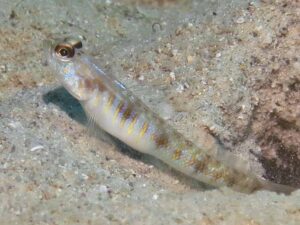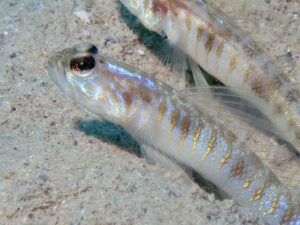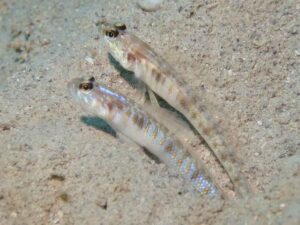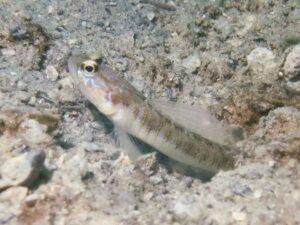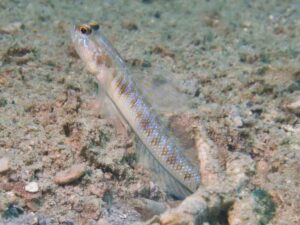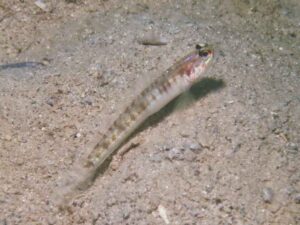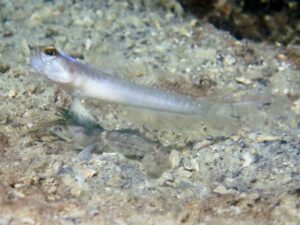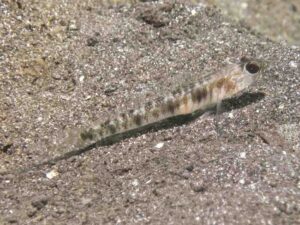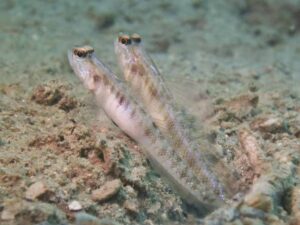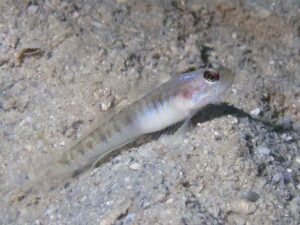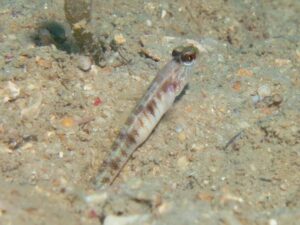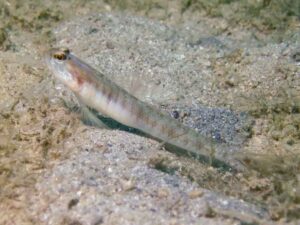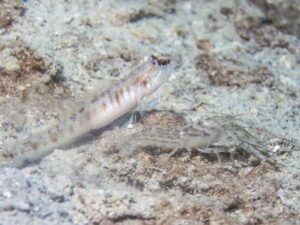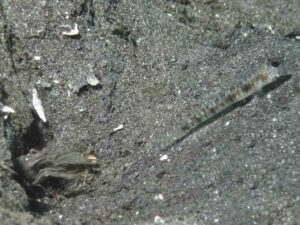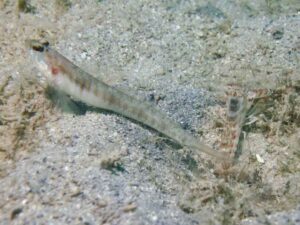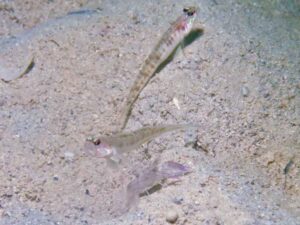Gold-Marked Shrimpgoby
Vanderhorstia auronotata
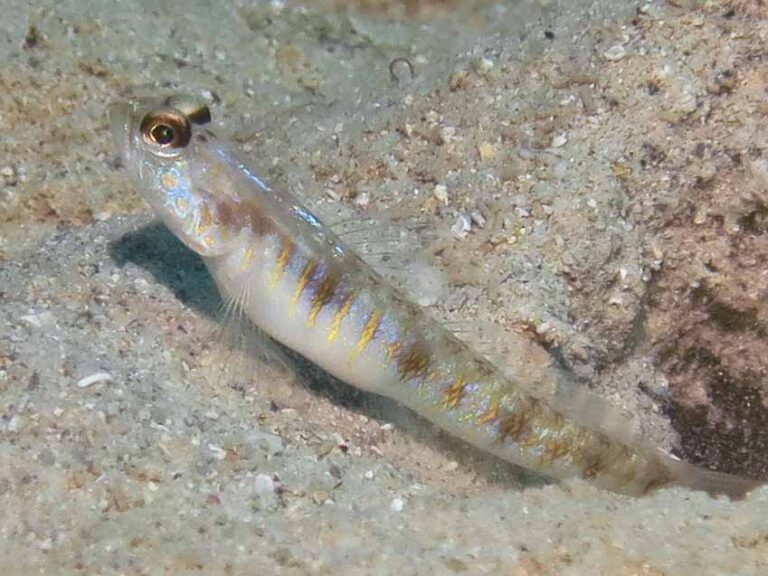
Gold-marked Shrimpgoby
Vanderhorstia auronotata
Randall, 2007
Description
Body design
A smallish goby about 5 cm long: the body is pale blue with about 16 fine dark-edged yellow bars along its length. In the mid-portion, every 4th bar widens out dorsally to form a dark wedge, which is in effect a vestigial row of mid-lateral blotches such as seen in other Vanderhorstia species. Apart from these wedges all the body scales, yellow and blue, are highly reflective in suitable light.
The head is plain with a pair of brown spots between and behind the eyes, a fine line along the upper lip and a brown patch on the gill cover. There are dark-edged yellow spots over the cheek and head. With appropriate lighting, all of these lie in a sea of reflective blue.
Fin design
The first dorsal fin is a high oval shape, translucent with yellow spots at the base.
The second dorsal fin is rectangular, reaching to the caudal fin and has similar ornamentation.
The caudal fin is long and lanceolate with spots in its upper half and reflecting rays in the lower section.
The pelvic fin is cream-coloured and the anal fin is a similar colour with more of a blue tinge.
Diagnostic features
The gold bands are the most conspicuous feature of this goby.
Similar species
Vanderhorstia belloides and V. dorsomacula are similar. The gold bands are narrower, longer and more defined than the bands of coalescence seen in some individuals of V. dorsomacula and V. belloides.
Etymology
The specific name auronotata is from the Latin aurum (= gold) and nota (= mark), in reference to the many bright orange-yellow markings on this species.
Natural History
Habitat
We found this species in the Solomon Islands at a depth of 15 to 22 m in bare areas of fine silty sand with Halophila seagrass in places. In Australia, we have found it on similar silty sand with scattered coral rocks at 17 m, but we have also found it at Low Isles in fine bare silty sand near the fringing reef edge at 6 m in a sheltered bay.
Behaviour
They hover above the burrow or perches at the entrance. Tolerates other sand gobies invading the burrow.
At Ghizo they were living amongst the Vanderhorstia dorsomacula and V belloides and distinguishing them in the field was difficult as their behaviour is the same.
At Low Isles we watched an individual associating with shrimps in two different burrow entrances. The shrimps were both red-speckled shrimps but the burrows were about 1. 5m apart. They were perhaps burrow mates at different entrances of a single, extensive burrow. The fish would lie at the burrow entrance while one shrimp would work at bulldozing. After a few minutes, it would rise and hover briefly before moving to the other burrow. Again it rested at the burrow entrance while the shrimp worked, then hovered before moving away to catch food. It was not observed again.
The distinctive gold bands disappear when the fish is displaying.
Distribution
Published distribution:
Known on the basis of a single specimen collected at Ambon, Indonesia. Since recorded from the Philippines and Milne Bay, Papua New Guinea
Our records: (range extension)
Solomon Islands; Kolombangara, Gizo Island, and Guadalcanal Island.
Australia; Low Isles and Fitzroy Island, near Cairns.
Associated Shrimp species
Associated Shrimps (four shrimp)
Diagonal Barred Snapping Shrimp, Alpheus rapacida
Pigpen Snapping Shrimp, Alpheus rapacida
Red-Speckled Snapping Shrimp, Alpheus species 10
Violet Snapping Shrimp, Alpheus fenneri

